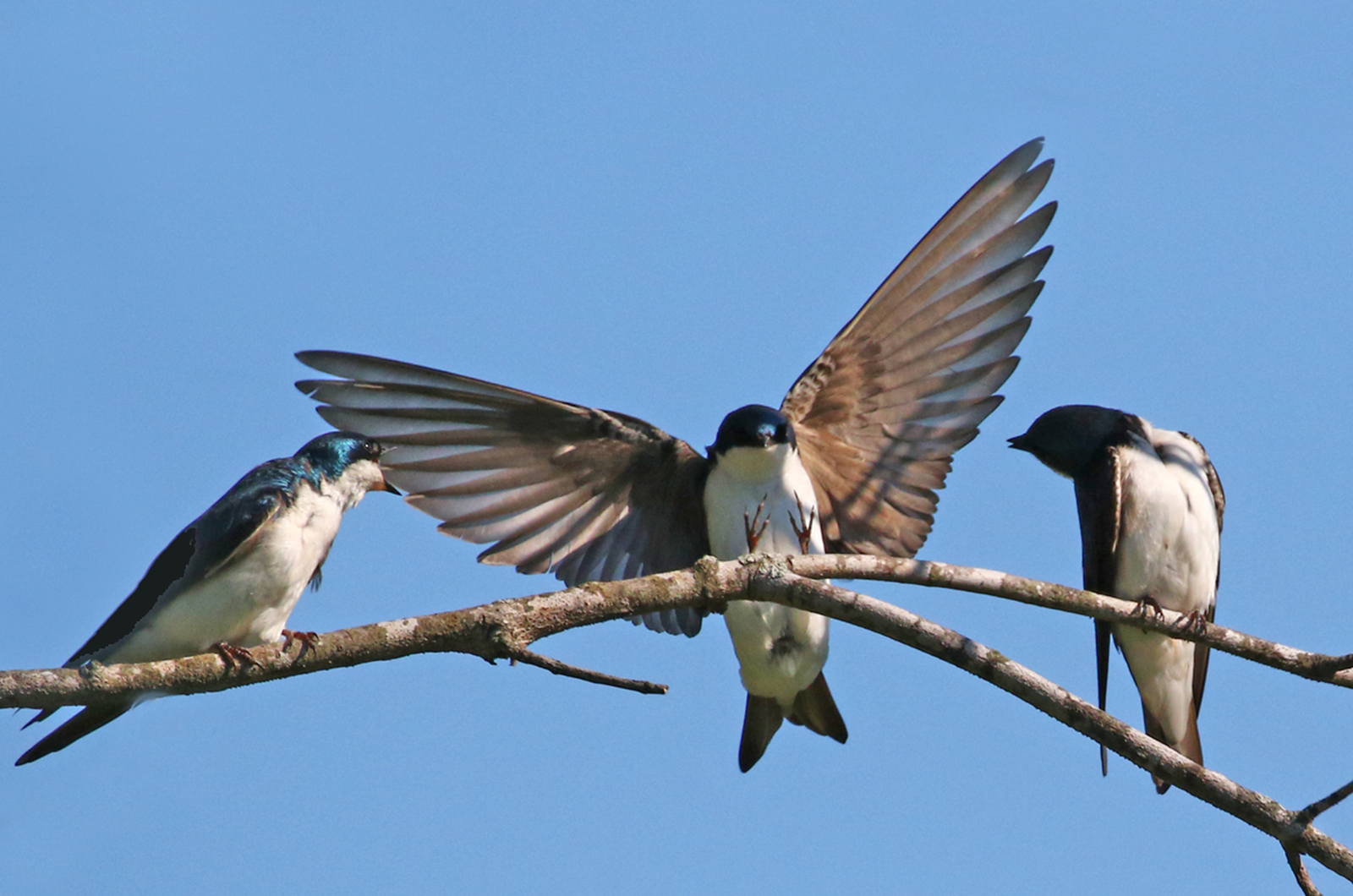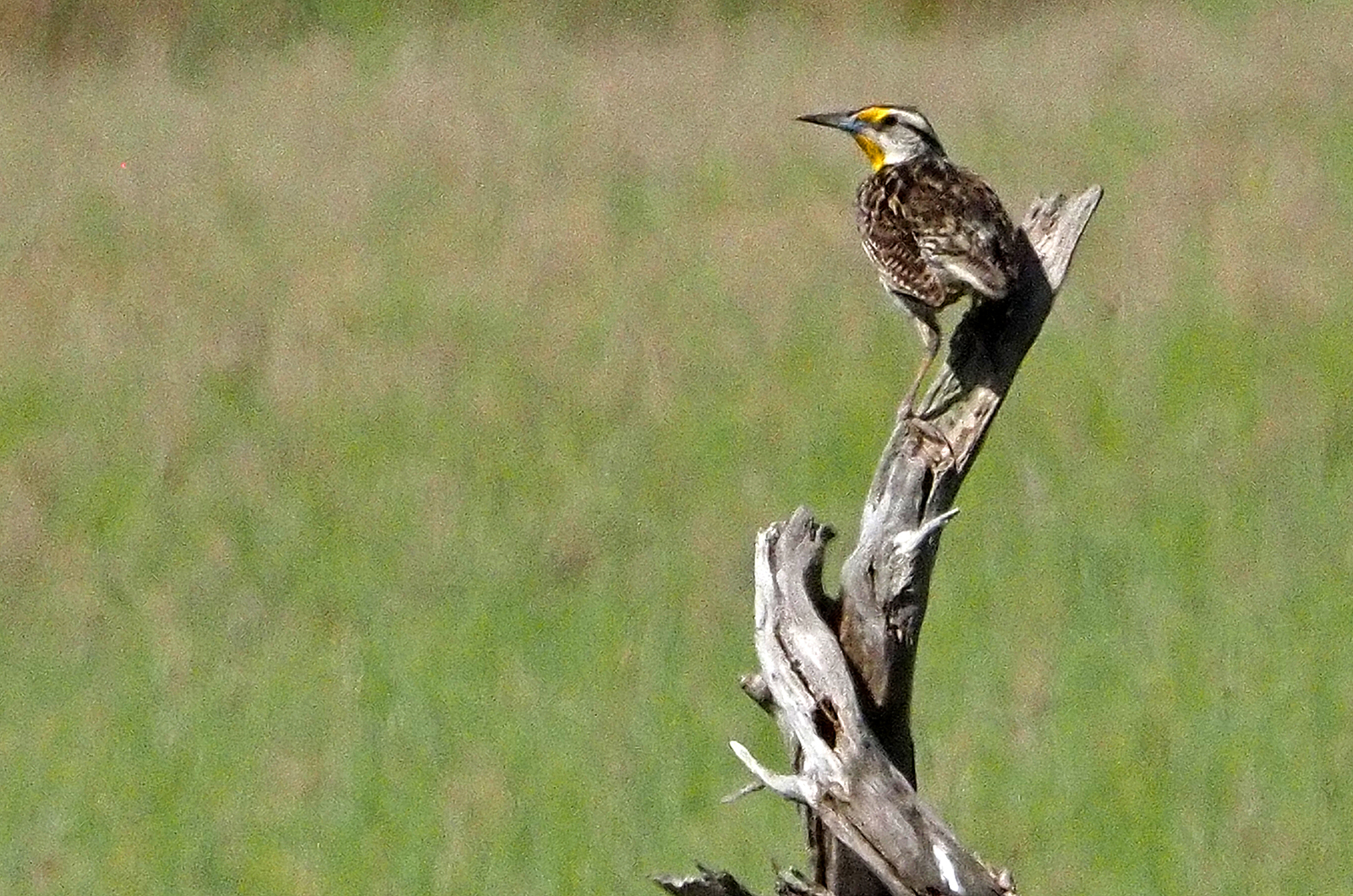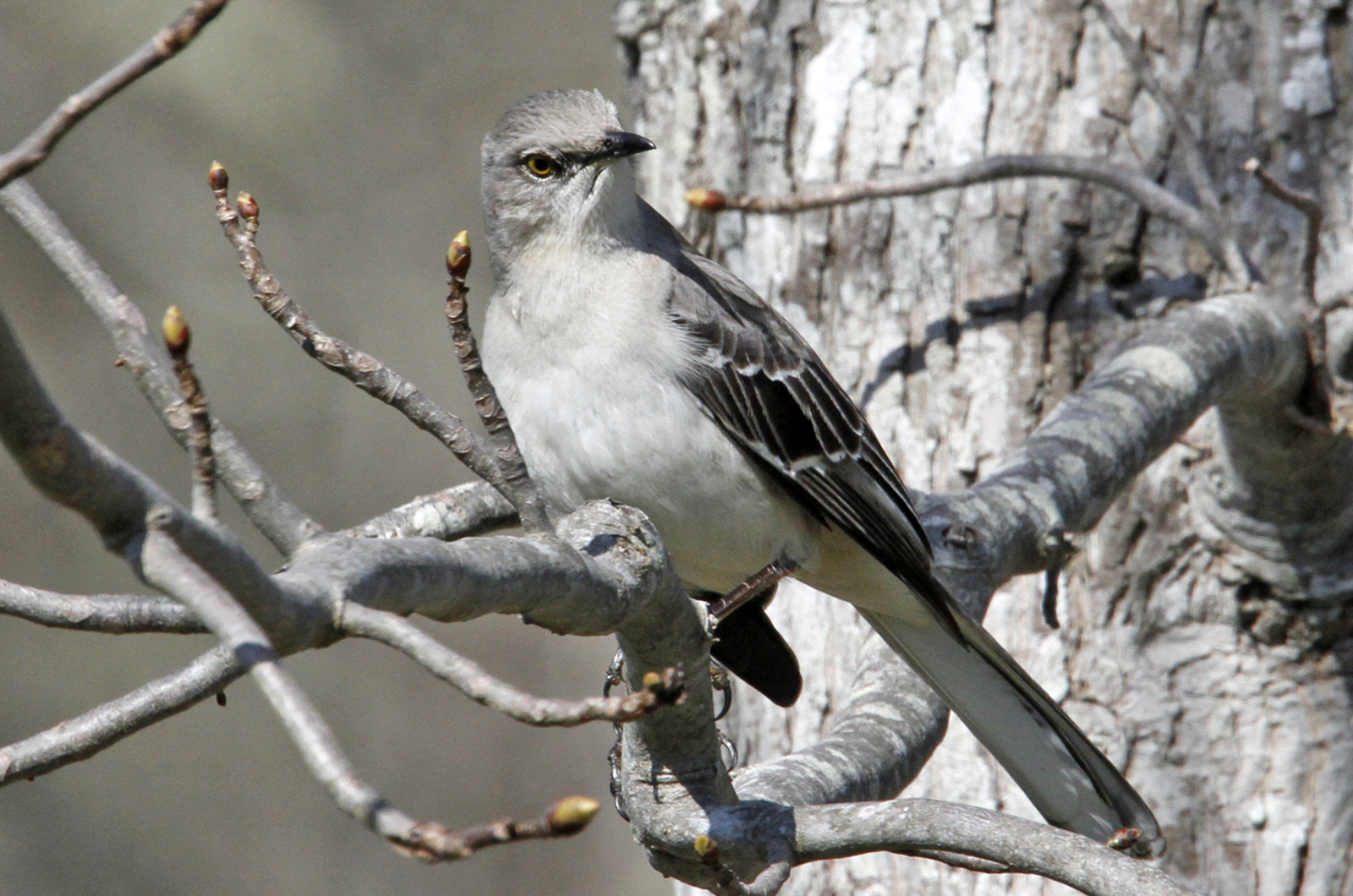A few tree swallows spent the winter here, but this week’s sightings are not in the same locations. Rich Couse spotted a tree swallow at the Hoft Farm on March 18 and Chris Scott saw four at Long Point on March 19, while my recollection is that larger numbers of overwintering birds have been reported from Lobsterville.
The recent sightings of eastern phoebes are most likely early migrants — Rich Couse found a phoebe at the Hoft Farm on March 18 and Kari Sasportas observed one at Cranberry Acres on March 24.
Notable also is a Lapland longspur that showed up on Menemsha Beach on March 24; Kari Sasportas found this uncommon species.
Speaking of beaches, piping plovers are showing up in ever larger numbers. John Nelson spotted six at Red Beach on March 16, Jeff Bernier found a flock of 12 at Little Beach on March 22, Catherine Deese notes that she saw the Beach Road pair on March 23, and I observed a pair on Sarson’s Island that same day. It will not be long before these birds and the larger American oystercatchers will be on their nests.
We have had some eastern meadowlarks present through the winter. Most recently, Bob Shriber saw seven of them on a farm in Chilmark on March 23.
Lesser black-backed gulls were unknown here until about 10 or 15 years ago. At first they were occasionally seen during the winter but now small numbers of them are regular winter visitors. While they are usually found along the south shore, John Nelson spotted an adult that was not in full breeding plumage in Ocean Park, sheltering from the strong winds on March 24.
Another sign of migration is the disappearance of a species that has been here through the winter. This is the first week that there are no reports of the redhead, Eurasian wigeon or northern shoveler that have been present at either Crystal Lake or Mud Creek. Ring-necked ducks are much less common, as I found only three of them at Crystal Lake on March 23 (instead of the usual 90 or so). Other less common ducks include Bob Shriber’s sighting of a ruddy duck In Aquinnah on March 22 and 20 lesser scaup at Squibnocket on March 20. Kari Sasportas also spotted five wood ducks at Cranberry Acres on March 24, a recently arrived migrant and the first sighting of the year.
Bird Sightings On the shorebird front, John Nelson came across a flock of 16 killdeer at the Farm Institute and one greater yellowlegs at Sengekontacket Pond on March 16.
Kari Sasportas spotted one killdeer at Farm Pond on March 22; the next day she observed two black-bellied plovers, one ruddy turnstone, two sanderling and one dunlin at Sarson’s Island, and one killdeer and seven purple sandpipers at the Gay Head Cliffs on March 23.
Also that day Nancy Weaver found one killdeer and two greater yellowlegs at the West Basin.
Matt Pelikan reports one greater yellowlegs at Sengekontacket Pond and five killdeer at Katama Farm on March 23. Bob Shriber and others saw the continuing western willet at the West Basin on March 24.
Mockingbirds are year-round residents but do not draw attention to themselves the way they do when they are singing loudly during the breeding season. But this month Lisa Maxfield saw one at Crystal Lake on March 2. The next day Nancy Nordin found one at Eel Pond and Nancy Weaver and Luanne Johnson spotted one along West Basin Road. Bob Shriber and Nancy Nordin observed one near the western end of Black Point Pond on March 4, and then none were reported for the next 12 days. John Nelson found two at the Katama Farm on March 16, then Kari Sasportas located one at the Gay Head Cliffs on March 22. Lisa Maxfield spotted one at the Oak Bluffs pumping station on March 23, the same day that Kari Sasportas saw one at Wasque and another near the Allen Farm March 23.
It is already nesting season for a few species. American woodcock courtship flights are underway at the Disc Golf course — Diane Amirault heard courtship flights there on March 22. While there she also heard a screech owl. Chris Scott heard one at Long Point on March 19.
On warm sunny days (do we get many of those in March?) pairs of red-tailed hawks can be seen and heard as they soar upward on the rising warm air thermals. They may be searching for food below them but they may also be establishing and defending nesting territories. They may also give their hoarse scream, but be careful not to be fooled by blue jays which imitate the red-tails’ call.
John Nelson reports three red-tailed hawks and three northern harriers at the Farm Institute on March 16. And Lanny McDowell observed several American crows dive-bombing a red-tailed hawk near Blackwater Preserve as they attempted to drive the hawk away on March 22. Of course you may also have observed red-winged blackbirds and common grackles trying to drive away the potentially predatory crows. What goes around comes around. All to defend their territories from the larger predators.
Finally, double-crested cormorants have started to arrive at their Sarson’s Island nesting colony. Chris Scott saw five there on March 13 and four there on March 18. I counted eight on March 23, and Kari Sasportas saw four there on March 24. There will be up to 400 breeding pairs there within a month.
Please email your sightings to birds@vineyardgazette.com.
Robert Culbert is an ecological consultant with Nature Watch living in Vineyard Haven.







Comments
Comment policy »